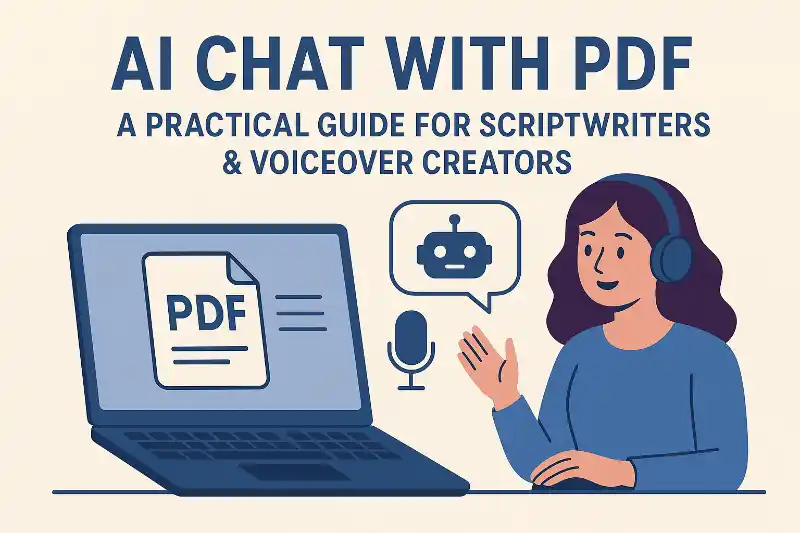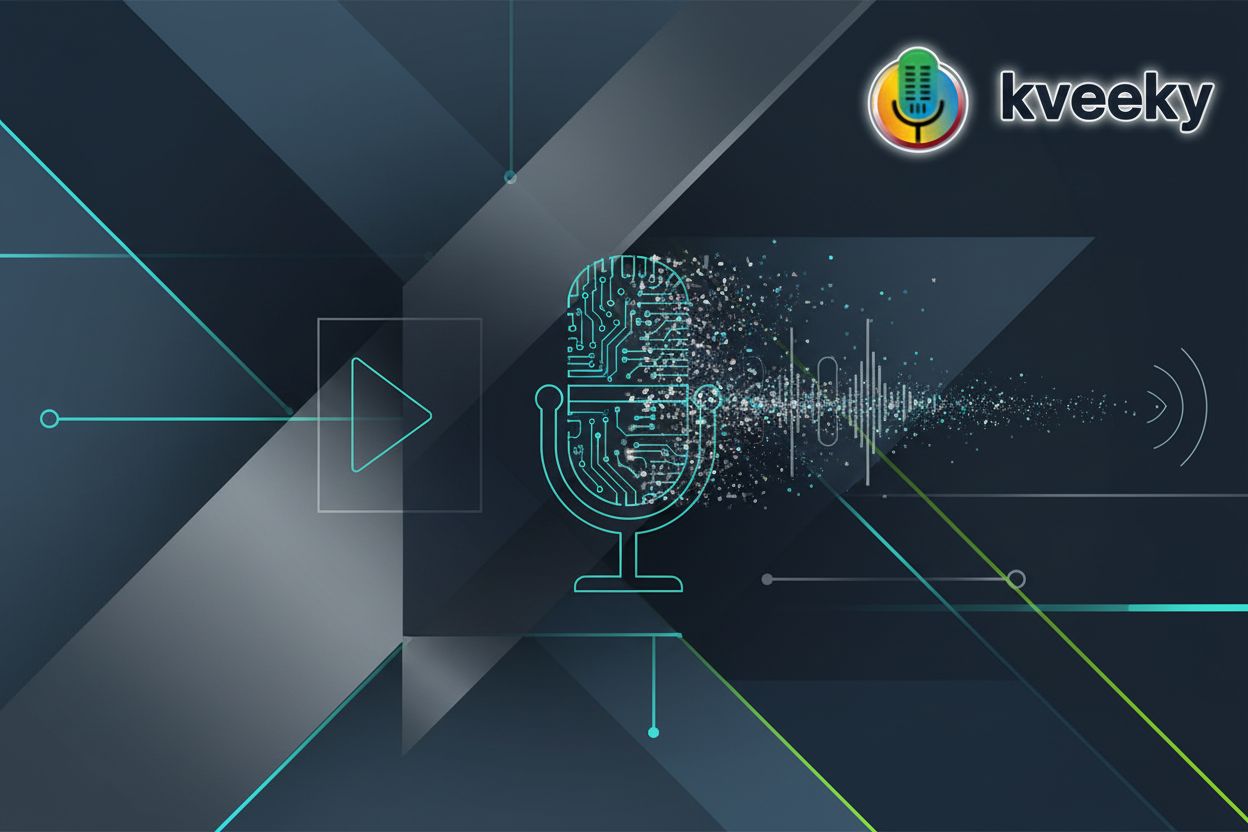Navigating the Ethical Minefield of AI Voice Cloning for Video Production
Understanding AI Voice Cloning: A Primer for Video Creators
Imagine hearing a deceased loved one's voice again, or a favorite actor narrating your video—ai voice cloning makes this possible. But how does this technology work, and what can video creators do with it?
ai voice cloning uses artificial intelligence to replicate a person's voice. It involves:
- Voice data collection: Gathering audio samples of the target voice. The more data, the better the replication.
- Model training: Using machine learning algorithms to analyze and learn the unique characteristics of the voice, such as tone, pitch, and accent.
- Voice synthesis: Generating new speech using the trained model, turning text into a realistic audio representation of the original voice.
There are two primary types of voice cloning: text-to-speech (TTS), which converts written text into spoken words, and voice-to-voice conversion, which modifies an existing audio recording to sound like another person.
Early text-to-speech (TTS) systems produced robotic, monotone voices. However, with advancements in machine learning, ai can now create incredibly realistic and natural-sounding voices. Key milestones include the development of neural TTS systems by companies like Google and Baidu, enabling human-like voice generation. As Synthesia.io notes, voice cloning can now replicate specific voices with minimal training data.
ai voice cloning offers several benefits for video production:
- Voiceovers: Create voiceovers for explainer videos, tutorials, and marketing content.
- Character voices: Develop unique character voices for animated videos and video games.
- Accessibility: Generate audio descriptions and subtitles to make video content accessible to a wider audience.
- Localization: Produce multilingual voiceovers for global audiences, expanding reach and engagement.

As you begin to explore the capabilities of ai voice cloning, it's important to consider the technology's rapid evolution. Next, we'll dive into the ethical implications of using this technology in video production.
The Ethical Tightrope: Key Concerns in Voice Cloning
ai voice cloning is rapidly changing video production, but with great power comes great responsibility. What ethical lines should video creators be aware of when using this technology?
One of the most pressing ethical considerations is obtaining explicit consent before cloning a voice. It's not enough to assume permission; you must secure clear, informed consent from the individual whose voice you intend to replicate. This ensures respect for personal autonomy and prevents potential legal issues.
- Legal considerations surrounding voice ownership and intellectual property are still evolving. As Schmeiser, Olsen & Watts, LLP notes, voices are not universally recognized as intellectual property, leading to legal ambiguity.
- Best practices for creating consent agreements include specifying the exact uses of the cloned voice, the duration of the license, and any compensation involved. For example, a voice actor might grant a video game company the right to use their cloned voice for a specific character in a single game title, with limitations on future projects.
The risk of using cloned voices to create deceptive or malicious content is a significant concern. ai-generated audio can be incredibly convincing, making it difficult to distinguish between real and fake speech.
- Deepfake audio scams can have a devastating impact. While Synthesia.io highlights the risks of fraudsters using synthetic voice technology to impersonate individuals for fraudulent wire transfers, a specific instance of a $243,000 wire transfer fraud is not directly detailed on their public-facing content. It's a known risk they discuss.
- Strategies for detecting fake audio include using ai-powered tools that analyze audio waveforms and identify inconsistencies. Watermarking synthetic voices can also help trace the origin of the audio and verify its authenticity.
Creating voice cloning models that accurately represent diverse accents and dialects is a challenge. Training data often lacks sufficient representation from minority groups, leading to biased results.
- Perpetuating stereotypes through biased voice data is a real risk. For example, if a voice cloning system is primarily trained on standard American English, it may struggle to accurately replicate regional Indian or African accents, as highlighted by milvus.io.
- Creating inclusive voice cloning systems involves actively seeking diverse datasets and employing techniques like data augmentation to improve representation. You can also fine-tune models with specific accents and dialects to ensure accuracy and authenticity.
Navigating this ethical tightrope requires careful consideration and proactive measures. Next, we'll explore how to ensure transparency and build trust when using ai voice cloning.
Navigating the Legal Landscape: Copyright, Right of Publicity, and Privacy
ai voice cloning raises complex legal questions. Can someone own a voice, and what rights do they have when it's replicated?
Copyright law protects original works of authorship, but it doesn't explicitly cover voices. Voices are generally not recognized as intellectual property under existing copyright law, creating a legal gray area, as highlighted by Schmeiser, Olsen & Watts, LLP. This means that simply replicating a voice may not constitute copyright infringement.
However, if a voice is used in a creative or expressive way, such as in a song or unique performance, copyright law might offer some protection. For example, if a cloned voice is used to create a song that infringes on an existing copyrighted work, the copyright holder could pursue legal action.
The right of publicity protects an individual's right to control the commercial use of their identity. This right, governed by state laws in the U.S., could extend to their voice. If a voice is deemed a clear identifier of a person, unauthorized commercial use of a cloned voice might violate this right.
For instance, if a company uses a celebrity's cloned voice in an advertisement without permission, that celebrity could sue for violating their right of publicity. The key factor is whether the voice is recognizable and associated with the individual.
Privacy laws, such as the General Data Protection Regulation (GDPR) in Europe, govern the collection and use of personal data. Voice cloning requires collecting and processing voice data, which raises privacy concerns. To address these concerns, it is essential to implement robust data protection measures, as explained by meegle.com.
This includes:
- Obtaining explicit consent from individuals before using their voice.
- Encrypting voice data.
- Complying with data privacy regulations.
Navigating these legal issues requires careful consideration and adherence to best practices. Next, we'll explore how to ensure transparency and build trust when using ai voice cloning.
Best Practices for Ethical Voice Cloning in Video Production
ai voice cloning offers exciting possibilities, but it's crucial to proceed ethically. How can video producers ensure they're using this technology responsibly?
Clearly stating your objectives for a voice cloning project helps set expectations. When you define these goals, consider how the cloned voice will enhance the video's message and appeal to your target audience.
It is important to inform viewers when a cloned voice is in use. Transparency builds trust and prevents unintentional deception. According to meegle.com, transparency is one of the key points to consider when you're looking into the ethics of voice cloning.
Creating clear, concise disclaimers is essential for ethical video production. Disclosures should be easy to understand and prominently displayed. For example, a simple on-screen text overlay stating "This video features an AI-generated voice" can suffice.
Developing a comprehensive consent form is paramount. The form should cover all potential uses of the cloned voice, including specific projects, duration of use, and any modifications.
Obtaining legal review of your consent form ensures it complies with relevant laws and regulations. This step can help protect both the voice provider and the video producer.
Maintaining detailed records of all consent agreements demonstrates due diligence. These records should include the date of consent, the scope of usage, and any compensation agreements.
Implementing robust security measures protects voice data from unauthorized access. This includes using strong passwords, multi-factor authentication, and secure storage solutions.
Using encryption and access controls limits exposure to sensitive voice data. Restricting access to authorized personnel only minimizes the risk of breaches.
Complying with data privacy regulations and industry best practices is crucial. This involves adhering to laws like GDPR, which governs the collection and use of personal data, as noted earlier.
By following these best practices, video producers can navigate the ethical minefield of ai voice cloning. These actions safeguard rights and build trust with audiences.
Next, we'll explore how AI voice cloning impacts creative expression, content authenticity, and the future of digital media.
Tools and Technologies for Responsible Voice Cloning
ai voice cloning is no longer a futuristic fantasy; it's here, and it's raising questions about responsible use. Fortunately, tools and technologies are emerging to help video creators navigate this ethical minefield.
When choosing a voice cloning platform, prioritize those with built-in consent management features. Look for platforms that require explicit consent from voice donors and provide tools to manage and track permissions. These features ensure you respect individual rights and maintain transparency throughout the cloning process.
Consider platforms with robust security features to protect sensitive voice data. Encryption, access controls, and secure storage solutions are essential to prevent unauthorized access and misuse. Platforms should also comply with data privacy regulations like GDPR.
Transparency is key. Choose platforms that offer transparency controls, allowing you to clearly label ai-generated content and disclose the use of cloned voices. This helps build trust with your audience.
Watermarking is crucial for preventing the misuse of synthetic voices. By embedding a unique identifier into the audio file, you can track its origin and verify its authenticity. This makes it easier to detect deepfakes and other malicious uses of cloned voices.
There are various techniques for embedding watermarks. Some involve inserting imperceptible audio signals, which are sounds that humans can't hear but machines can detect. Others use cryptographic methods to link the audio to a specific source, essentially creating a digital signature. The effectiveness of watermarking can vary, and advanced techniques are constantly being developed to make them more robust against tampering.

Several ai ethics frameworks can guide your voice cloning practices. Organizations like the IEEE and ACM offer comprehensive guidelines on responsible ai development and deployment.
Using these guidelines, you can develop your own ethical framework tailored to voice cloning. For example, a voice cloning ethical framework might include specific points like:
- Mandatory consent for all voice data usage, with clear opt-out mechanisms.
- Prohibition of voice cloning for impersonation or malicious intent, with defined penalties.
- Regular audits of voice cloning systems to identify and mitigate biases.
- Clear labeling of all ai-generated audio content.
- Secure storage and anonymization of voice data where possible.
By carefully selecting ethical platforms, implementing watermarking techniques, and adhering to ai ethics frameworks, you can use voice cloning responsibly. Doing so safeguards rights and builds trust.
Real-World Examples: Ethical Voice Cloning in Action
ai voice cloning is making waves across industries, but how does ethical voice cloning look in practice? Let's explore real-world examples to see this technology in action.
Voice cloning helps ALS (Amyotrophic Lateral Sclerosis) patients preserve their identity and communicate effectively. ALS robs people of their ability to speak, but voice cloning offers a solution.
- Organizations work with ALS patients to create personalized synthetic voices before they lose their natural voice.
- This cloned voice allows patients to maintain a sense of self and connect with loved ones, preserving their identity.
- The primary ethical consideration involves obtaining informed consent and ensuring the patient retains control over their cloned voice.
ai voice cloning is also enhancing accessibility in education, creating more inclusive learning environments. The technology can generate custom voices tailored to individual needs.
- Voice cloning helps create personalized learning experiences for students with disabilities, addressing unique learning styles.
- Custom voices benefit students with reading and learning challenges by providing alternatives to standard text-to-speech systems.
- Educational apps use voice cloning responsibly by prioritizing user consent and data privacy, and ensuring the technology enhances learning without replacing human interaction.
In the entertainment industry, voice cloning creates unique and compelling characters. This offers new creative avenues for animated films and TV shows.
- Voice cloning creates distinct character voices, adding depth and personality to animated projects.
- The ethical considerations involve obtaining consent for voice actors and ensuring fair compensation.
- Animated projects use voice cloning to create diverse characters while avoiding stereotypes. For instance, a studio might intentionally use voice cloning to generate a character voice that deliberately counters common ethnic or gender stereotypes associated with certain roles, by carefully selecting voice data or fine-tuning models to achieve a unique, unbiased vocal profile.
As meegle.com notes, voice cloning is being used to create personalized learning experiences for students with disabilities. These examples demonstrate the practical applications of ethical voice cloning across diverse sectors.
The Future of Voice Cloning: Trends, Challenges, and Opportunities
Will ai voices soon be indistinguishable from human voices? As ai voice cloning evolves, video producers must stay informed about the trends, challenges, and opportunities that lie ahead.
Emotional voice synthesis is advancing, allowing ai to convey a wider range of emotions. This can help video creators produce more engaging and relatable content.
Integration with other ai technologies like natural language processing (NLP) and computer vision is also increasing. This integration enables more sophisticated applications, such as ai-driven virtual assistants that can understand and respond to visual cues.
The potential for personalized and interactive voice experiences is growing. Imagine viewers being able to interact with video content using their own cloned voice. This could involve interfaces where a viewer's cloned voice is recognized by the video player, allowing them to ask questions about the content, make choices that alter the narrative, or even have the video respond directly to them in their own voice.
There is a need for ongoing dialogue among developers, policymakers, and ethicists. This helps ensure ai voice cloning is developed and used responsibly.
Developing robust regulations and ethical frameworks is critical. These frameworks should address issues such as consent, privacy, and the potential for misuse.
Strategies for promoting responsible innovation include transparency controls and watermarking. These measures will be crucial for future responsible innovation, as they will need to evolve to combat increasingly sophisticated deepfake technologies and ensure that the origin and authenticity of audio content can always be verified.
Voice cloning can create new and engaging video content. For example, video producers can use cloned voices to develop unique character voices for animated videos or to generate multilingual voiceovers for global audiences.
Exploring the potential for storytelling, education, and entertainment is key. Voice cloning can bring historical figures to life or create personalized learning experiences.
Video producers play a crucial role in shaping the future of ethical voice cloning. By adhering to best practices and advocating for responsible innovation, they can help ensure this technology benefits society as a whole.





